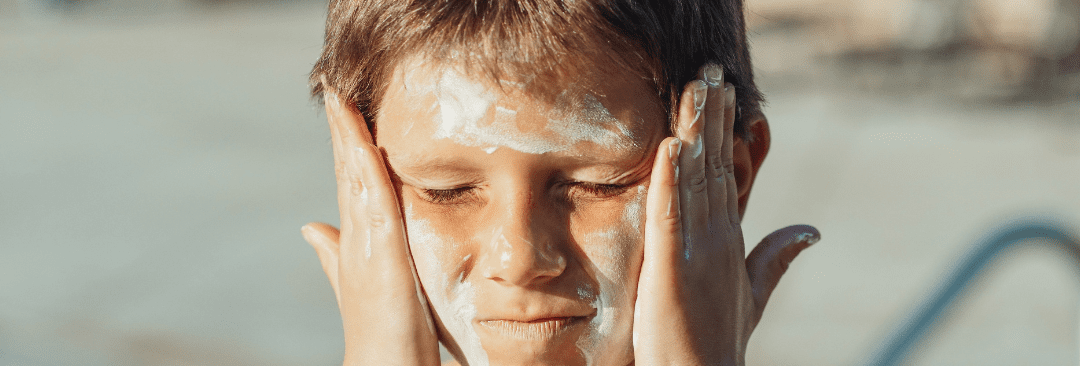Schools are in a unique position to teach students about sun protection behaviours, minimise UVR exposure, and ultimately lower a children’s lifetime risk of developing skin cancer, since students are at school when daily ultraviolet radiation levels are at their highest.
Skin cancer is one of the most preventable cancers. The earlier you can instil sun safety in children, the more likely it is that they will choose it as a lifestyle choice. As children get older, it will hopefully become part of their daily routine. Below are just some of the ways that schools can educate their pupils about keeping safe in the sun.
Promote Sun Safety Awareness
In school assemblies and other events that reach staff, students and parents, promote sun safety and reinforce the school’s sun safety policies. This can be achieved through newsletters, posters, PTA meetings, and student/teacher activities.
Ensure Hats and Suncreams are Mandatory
To safeguard children, ensure that parents and families always supply hats and suncream in the children’s bags so that they are always protected while outdoors during break times, PE lessons, after-school activities, or field trips. Make sun safety behaviours a routine so that wearing a hat and taking time out to reapply suncream becomes habitual. Regularly drinking water should also be encouraged to ensure children are hydrated throughout the day.
Teach Students about UV Protection
Include sun safety education across the curriculum to teach children about the dangers of sun exposure, and the benefits of practising sun-safe behaviours to help prevent developing skin cancer.
Make Sun Safety Fun
Although sun safety is an extremely serious topic, sometimes educating children in a light-hearted way encourages a higher engagement rate. Teachers can create a sticker chart or other reward charts for those children who have applied their suncream thoroughly. Or make fun games on who is the quickest pupil to put their hat on before they head out to the playground on a very hot day.
Ensure the Correct Factor Suncream is Used
The NHS advises children to wear at least SPF 30 suncream, but the higher the better! They also advise to use one with at least a 4-star UVA protection.
Encourage Children to Seek Shade
The sun’s rays tend to be their hottest between 10am and 4pm. If children are heading out for sports or break times during these hours, ensure they are seeking shade under trees or other shaded parts of the playground.
Research Additional Resources
It’s always worth researching professional programmes for additional resources. Sun Safe Schools is a national programme of accreditation offering free resources to primary schools to help in their responsibility to protect children against UV.
Dealing with Sunburn
Treating sunburn is just as important as learning about sun safety. Apply a soothing after sun lotion or spray, such as aloe vera, after cleansing irritated skin with cool water.
Pain relievers like paracetamol or ibuprofen work by assisting in the reduction of inflammation brought on by sunburn.
Until any traces of redness have disappeared, avoid the sun.
Invest in a Permanent Shelter
While encouraging children to seek shelter under trees and shaded spots in the playground is advisable, investing in a more permanent, long-term shelter is far safer.
School shelters and canopies are specifically designed and installed to protect staff, teachers and parents against all elements – hot or cold. Teachers no longer have to worry about timing their PE lessons during cooler times of the day. With a school canopy, children can be protected against the sun’s harsh UV rays at all times.
Having a permanent fixture on your school grounds also means that teachers and pupils can enjoy outdoor lessons without any worry. From outdoor classrooms to sports canopies, to playground shades, and more – our bespoke designs can cater to your school’s needs.

